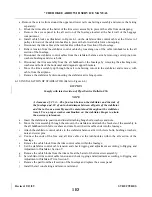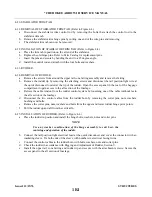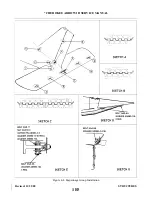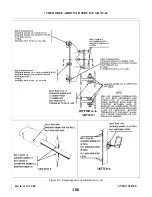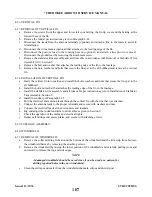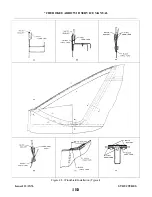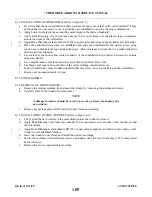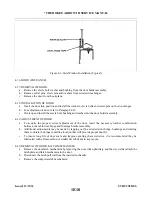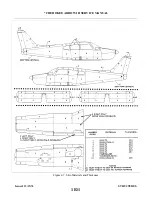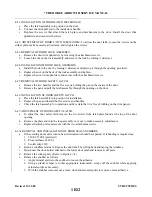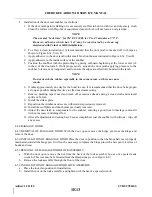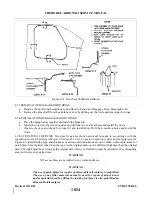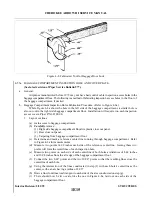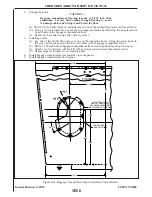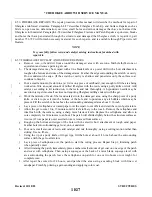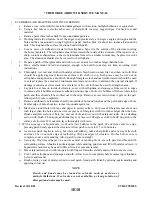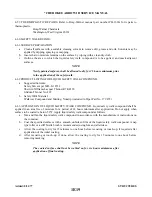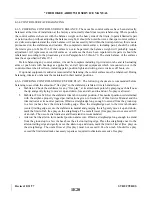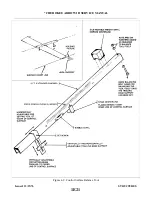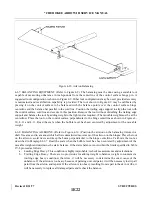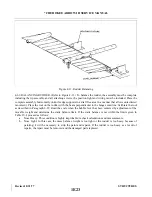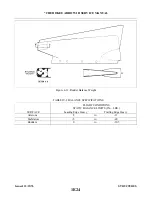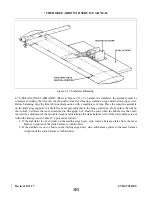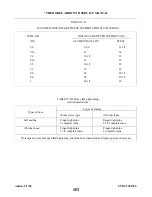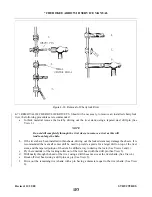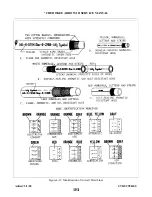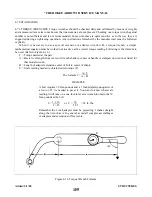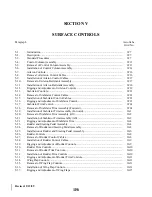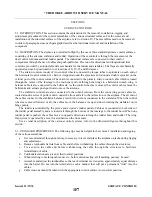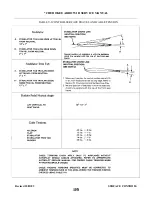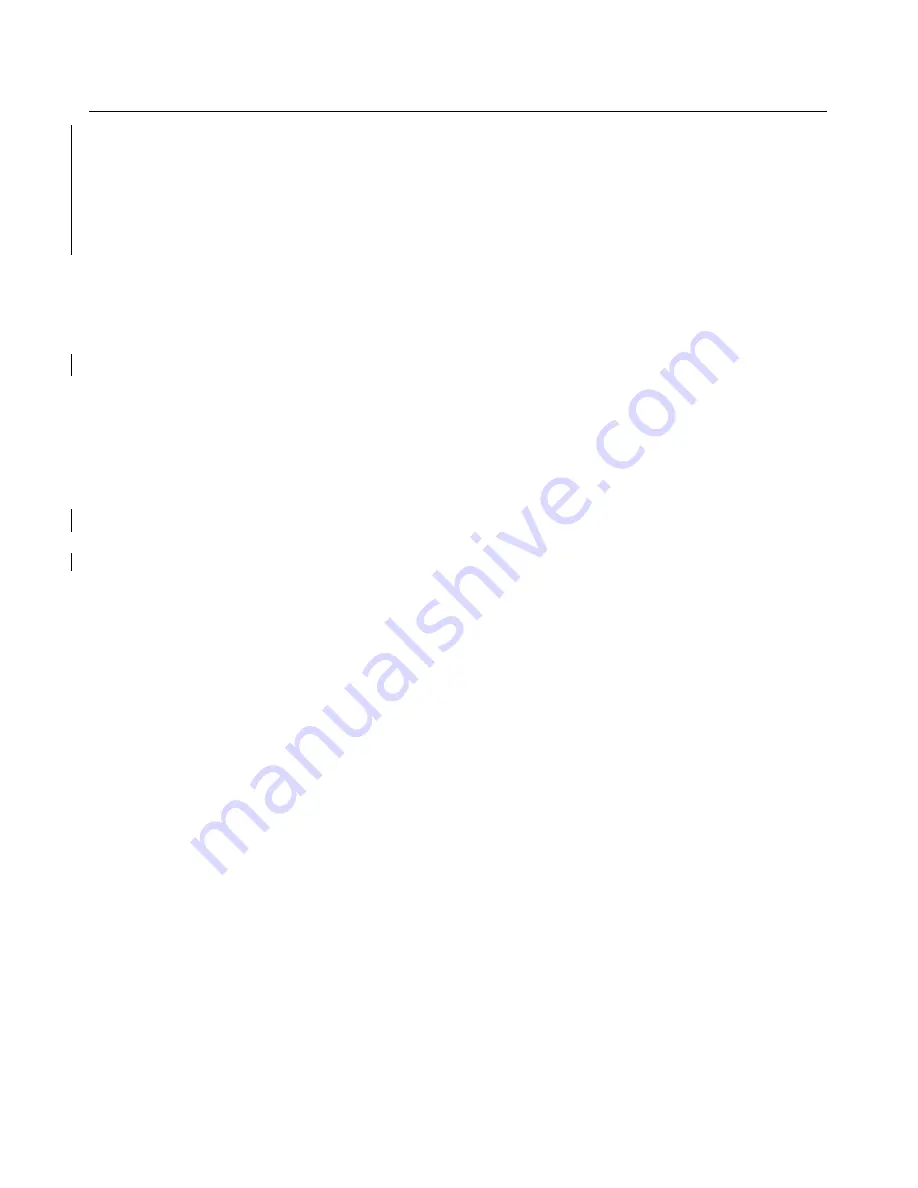
4-56. FIBERGLASS REPAIRS. The repair procedure in this manual will describe the methods for repair of
fiberglass reinforced structures. Paragraph 4-57 describes Fiberglass Touch-Up and Surface Repairs such as
blisters, open seams, delamination, cavities, small holes and minor damages that have not harmed the
fiberglass cloth material. Paragraph 4-58 describes Fiberglass Fracture and Patch Repairs as puncture, breaks
and holes that have penetrated through the structure and damaged the fiberglass cloth. A repair kit, part
number 756 729 will furnish necessary material for such repairs, and is available through Piper Aircraft
Dealers.
NOTE
Very carefully follow resin and catalyst mixing instructions furnished with
repair kit.
4-57. FIBERGLASS TOUCH-UP AND SURFACE REPAIRS.
a.
Remove wax, oil and dirt from around the damaged area with acetone, Methylethylketone or
equivalent and remove paint to gel coat.
b. The damaged area may be scraped with a fine blade knife or a power drill with a burr attachment to
roughen the bottom and sides of the damaged area. Feather the edge surrounding the scratch or cavity.
Do not undercut the edge. (If the scratch or cavity is shallow and penetrates only the surface coat,
continue to Step h.)
c.
Pour a small amount of resin into a jar lid or on a piece of cardboard, just enough to fill the area being
worked on. Mix an equal amount of milled fiberglass with the resin, using a putty knife or stick. Add
catalyst, according to kit instruction, to the resin and mix thoroughly. A hypodermic needle may be
used to inject gel into small cavities not requiring fiberglass millings mixed with the gel.
d. Work the mixture of resin, fibers and catalyst into the damaged area, using the sharp point of a putty
knife or stick to press it into the bottom of the hole and to puncture any air bubbles which may be
present. Fill the scratch or hole above the surrounding undamaged area about 1/ 16 inch.
e.
Lay a piece of cellophane or waxed paper over the repair to cut off air and start the cure of gel mixture.
f.
Allow the gel to cure 10 to 15 minutes until it feels rubbery to the touch . Remove the cellophane and
trim flush with the surface, using a sharp razor blade or knife. Replace the cellophane and allow to
cure completely for 30 minutes to an hour. The patch will shrink slightly below the structure surface as
it cures. (If wax paper is used, ascertain wax is removed from surface.)
g. Rough up the bottom and edges of the hole with the electric burr attachment or rough sand paper.
Feather hole into surrounding gel coat, do not undercut.
h. Pour out a small amount of resin, add catalyst and mix thoroughly, using a cutting motion rather than
stirring. Use no fibers.
i.
Using the tip of a putty knife or finger tips, fill the hole at about 1/16 inch above the surrounding
surface with the gel coat mixture.
j.
Lay a piece of cellophane over the patch to start the curing process. Repeat Step f, trimming patch
when partially cured.
k. After trimming the patch, immediately place another small amount of gel coat on one edge of the patch
and cover with cellophane. Then, using a squeegee or the back of a razor blade, squeegee level with
area surrounding the patch, leave the cellophane on patch for one or two hours or overnight, for
complete cure.
1. After repair has cured for 24 hours, sand patched the area using a sanding block with fine wet
sandpaper. Finish by priming, again sanding and applying color coat.
Revised: 10/18/83
1E17
* CHEROKEE ARROW III SERVICE MANUAL
STRUCTURES
Summary of Contents for ARROW III
Page 4: ...THIS PAGE INTENTIONALLY LEFT BLANK 1A4...
Page 12: ...THIS PAGE INTENTIONALLY LEFT BLANK 1A12...
Page 94: ...Figure 4 2 Wing Installation Revised 2 13 89 1D22 CHEROKEE ARROW III SERVICE MANUAL STRUCTURES...
Page 171: ...lH3 INTENTIONALLY LEFT BLANK...
Page 172: ...lH4 INTENTIONALLY LEFT BLANK...
Page 286: ...THIS PAGE INTENTIONALLY LEFT BLANK Revised 2 13 89 2A8...
Page 528: ...INTENTIONALLY LEFT BLANK 2K10 THRU 2L24 2K10...

